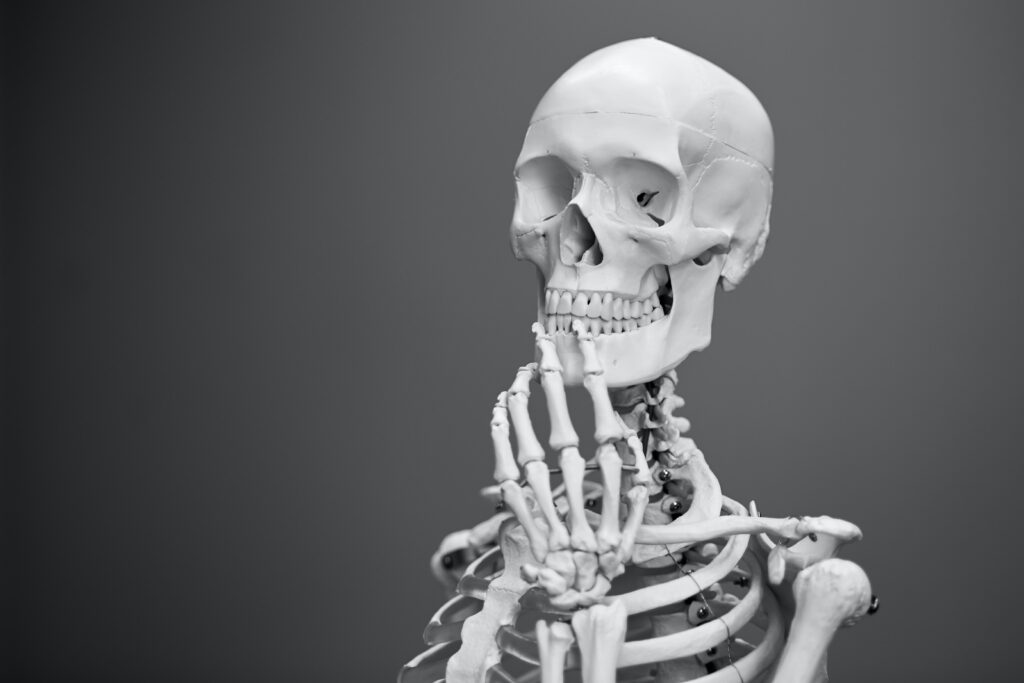Calcium
Dr. med. Heinz Lüscher
Calcium is the most abundant mineral in the human body. Most of it is bound in the bones and gives them a healthy stability. However, it has many other important functions in the organism.
What is calcium?
The mineral is a so-called bulk element. This means that the substance is present in the human body not only in small traces (as is the case with trace elements), but in considerable quantities. In adults, it accounts for 1 to 2 percent of body weight, making it the most abundant mineral in the organism. Around 99 percent of it is bound in bones (and teeth). On the one hand, it gives bones and teeth stability and strength; at the same time, bones serve as calcium stores. The small remainder of one percent is distributed mainly in the cells and with only about 0.1 percent in the extracellular space between the cells.
What are the functions in the body?
The mineral is involved in various important tasks in the body. Bones and teeth consist to a large extent of various calcium compounds. It is therefore important for their stability. For this reason, the treatment of osteoporosis with calcium is the main focus of conventional medicine. It also plays a decisive role in the excitation of muscles and nerves. If calcium levels become unbalanced, this can lead to muscle cramps or neurological problems. The mineral is also involved in blood clotting. Prothrombin, one of the blood clotting factors, can only be converted into its active form thrombin with the help of calcium. It is also important for regulating the acid-base balance. Our blood, for example, must constantly have a slightly alkaline value. If the blood pH falls below a certain level, calcium is dissolved from the bones to compensate for this and prevent the blood from becoming “acidic”. This would have life-threatening consequences, since the blood pH influences, among other things, the respiratory rate and the transport of oxygen (with the red blood cells). Furthermore, calcium is needed for glycogen metabolism, in cell division and also in the activation of some enzymes and hormones.

Where is it found in the diet?
The most important sources are milk and dairy products (especially hard cheese). Those who want or need to avoid dairy products can also obtain it from some predominantly green vegetables such as broccoli, kale or arugula. The stinging nettle has an astonishingly high calcium content, but is probably less suitable for regular consumption. But many other local wild plants are also a valuable source, as are the leaves of the moringa tree from faraway Africa. Other sources of calcium include poppy seeds, chia seeds, almonds and nuts. If you want to get additional calcium from drinks, you should prefer mineral water with a content of at least 150 mg/L.
Calcium Deficiency: Hypocalcemia
From my practical experience I can say that calcium deficiency (hypocalcemia) is very rare in this country. Our “milk-based” diet normally supplies us with sufficient amounts. An increased risk is most likely to occur in children in the growth phases, in pregnant and breastfeeding women, women during and after menopause and people with lactose intolerance. In the case of a deficiency, the calcium that the body needs for other tasks is dissolved from the bones, which can lead to osteoporosis (“bone loss”). In this context, it is important to note that calcium can only be sufficiently absorbed by the body if there is an optimal supply of vitamin D!
Osteoporosis is a common disease of the bone, which mainly affects older women. It can be treated (or better yet, prevented) by taking vitamin D3 (3000-4000 IU per day) and vitamin K2 (200 micrograms). These two vitamins complement each other and synergistically promote bone remineralization. Further, care must be taken to ensure an adequate supply of magnesium (400-800 mg). The common treatment with calcium and too low doses of vitamin D (usually only 800 IU) is unfortunately more or less ineffective.
Calcium excess: Hypercalcemia
An elevated blood calcium level (hypercalcemia) is a highly uncommon condition for which the cause must be found. Certain diseases of the kidney or thyroid gland, or the use of medications such as diuretics, can cause levels to rise. In an advanced stage, hypercalcemia can lead to kidney stones and even kidney failure.
In which cases should calcium be taken as a dietary supplement?
If a deficiency is suspected, it is recommended to have it confirmed by laboratory testing. If there is indeed a deficiency, I recommend a product that combines two different calcium salts. If there is an inorganic and an organic calcium source, a different rate of metabolization is achieved in the body. This means that a longer lasting and higher level is given and therefore more time for incorporation into the bones. Calcium in the form of calcium carbonate is an inorganically bound calcium source and calcium lactate gluconate is an organically bound source. A dietary supplement with calcium that also contains magnesium and vitamin D3 offers further advantages, since calcium acts synergistically with these two substances. Zinc and vitamin C are also good companions because they also support the functions of calcium.
Dosage recommendation
I recommend a product that contains the above ingredients in convenient sticks. Of these, it takes 1-2 sticks per day (3.2g each in total), depending on the situation.
